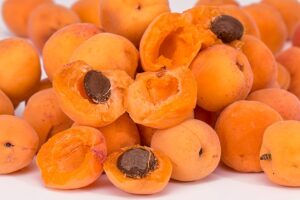Introduction
Carbohydrates are one of the essential macronutrients in our diet that provide energy for our body. They are made up of monomers, which are small molecules that can join together to form larger structures. In this article, we will explore the chemical formula for a monomer of carbohydrates and understand its significance in the formation of complex carbohydrates.
Monomers of Carbohydrates
Carbohydrates are composed of carbon, hydrogen, and oxygen atoms. The monomers of carbohydrates are called monosaccharides. Monosaccharides are simple sugars that cannot be further broken down into smaller sugars. They are the building blocks for more complex carbohydrates.
The chemical formula for a monomer of carbohydrates can be represented as (CH2O)n, where “n” represents the number of carbon atoms in the monosaccharide. This formula indicates that for every carbon atom, there are two hydrogen atoms and one oxygen atom, which is the same ratio found in water (H2O).
Examples of Monosaccharides
Monosaccharides come in various forms, with different numbers of carbon atoms. Some common examples of monosaccharides include glucose, fructose, and galactose. Glucose is a six-carbon monosaccharide and is the primary source of energy for our body. Fructose, also a six-carbon monosaccharide, is commonly found in fruits and is the sweetest of all sugars. Galactose is another six-carbon monosaccharide and is found in dairy products.
Each of these monosaccharides has the same chemical formula, (CH2O)6, but their arrangement of atoms gives them distinct properties and functions in our body.
Formation of Complex Carbohydrates
Monosaccharides can join together through a process called dehydration synthesis or condensation reaction. In this process, a molecule of water is removed, and the monosaccharides are linked together by a glycosidic bond. This bond forms between the carbon atom of one monosaccharide and the oxygen atom of another monosaccharide.
When two monosaccharides join together, they form a disaccharide. Examples of disaccharides include sucrose, lactose, and maltose. Sucrose is formed by the combination of glucose and fructose, lactose is formed by the combination of glucose and galactose, and maltose is formed by the combination of two glucose molecules.
Further, multiple monosaccharides can join together to form polysaccharides. Polysaccharides are complex carbohydrates and serve as storage or structural molecules. Examples of polysaccharides include starch, glycogen, and cellulose. Starch is the storage form of glucose in plants, glycogen is the storage form of glucose in animals, and cellulose is a structural component of plant cell walls.
Conclusion
The chemical formula for a monomer of carbohydrates is (CH2O)n, where “n” represents the number of carbon atoms in the monosaccharide. Monosaccharides are the building blocks of carbohydrates and can join together to form more complex carbohydrates such as disaccharides and polysaccharides. Understanding the chemical formula and structure of monomers is crucial in comprehending the composition and function of carbohydrates in our body.
References
– National Center for Biotechnology Information. (2021). Carbohydrates. Retrieved from ncbi.nlm.nih.gov: https://www.ncbi.nlm.nih.gov/books/NBK22436/
– Nelson, D. L., Cox, M. M. (2008). Lehninger Principles of Biochemistry. W. H. Freeman and Company.












